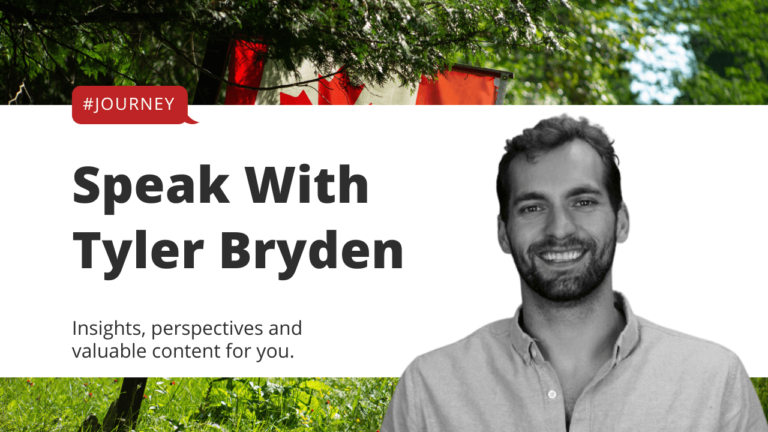𝗪𝗵𝗮𝘁 𝗶𝘀 𝗧𝗶𝗺𝗲 𝘁𝗼 𝗩𝗮𝗹𝘂𝗲 (𝗧𝗧𝗩)?
- A key metric for SaaS companies to decrease churn
- Different types of value (basic, exceed, immediate, short, long)
- Defining and creating an “aha moment” for value realization
- Shortening the time to value for retention and growth
#timetovalue #ttv #saas #productmarketing #productmarketer #saasmarketing #conversionrateoptimization #freetrial #freemium #growth #productledgrowth #productled #plg
Resources
Time to Value: A SaaS Guide to the TTV Galaxy… and Beyond | Chameleon
What is TTV (Time to Value) in SaaS? What it Means and Why it Matters. | The Startup Finance Blog
Guide to Minimizing Time to Value (TTV) in SaaS Products – Regpack
Time to Value (TTV) – Baremetrics
What is ‘time-to-value’ and why is it important for customer success? | Insightly
What is TTV and How to Reduce Time to Value Today
Profit Well Time To Value
The Importance of Time to Value (TTV) Metric for SaaS Companies
Measuring Time to Value (TTV) to Improve The Customer Onboarding Experience – Arrows.to
The Importance of Time to Value for SaaS Businesses and 10 Ways to Improve It
YouTube Video
Automated Transcription
Hello, I’m Tyler Bryden. I’m sharing insights from my journey building products that in company and just trying to be a better person. If you are watching this would love if you commented below. If you’re on YouTube like and subscribe today I want to talk about something really interesting which is this idea of time to value and time to value is specifically looking through the lens of software and it’s an important principle in product marketing. And really the idea here is that you want to shorten the time to value creation when someone signs up for your. Product and this has lots of different implications for where it is, but generally what are you looking to do? You’re trying to decrease churn in in people who are signing up for your product. That could be someone who pays right away that could also be someone who does a free trial and.
They then have 4 seven 1430 days to experience the product. Generally, I mean, unless you’re not a business, you’re trying to get someone in that free trial to experience that value, and then have that sort of moment and then sign up to become a paid user of the platform and. There’s lots of different ways that people look at this, but one of the ways it’s been described is the AHA. Moment, and so when you are a user, you sign up for the platform. Whatever that platform is, you have that moment with it. Oh wow, this is valuable. You have that realization. The value is created and then moving forward there’s less friction in someone reusing the product continuously using product or executing on the use cases or tasks that they have. And I’m going to look specifically through the lens of my own.
Company here at speak I just to give some more concrete examples from my experience and one of the things that I was looking at is sort of a cohort of the last 14 days of people who had signed up for a free trial, and in that time we had 1.5% conversion rate to the paid paid paid subscription plan. Debatable whether that’s good or not. Lots of factors depending on you know what, how people signed up, what they were looking for, expectations met, etcetera etcetera. As always in business, you want to make it better. You want to improve those metrics and we’re looking to move that needle up on that conversion rate because that has huge impact on the growth of the business.
In terms of that, what I what something that was interesting we noticed just from a small example, is that the people in that that Cohort 5 there were five of anyone who signed up for an active plan had at least five sessions in the app, and a lot of the people who did not sign up only had one one session, maybe two sessions. So what you see immediately is that the time to value creation was created and led to them coming back to the product, finding value, finding usage out of it. And then moving forward with the subscription and our specific use cases. And we’ve seen this among many businesses and industries and companies and products. There are also specific actions that are taken that are being taken that then indicate that there is that this time to value has been sort of fulfilled in some way. And with that just as an example, you know hop in and we we what we’ve tried to do is streamline this as much as possible is really this idea of quick options so for us.
Some of the ways that we’ve seen value created very quickly is in this quick option, which is an upload. Someone creating a new text note or someone creating a recorder and then capturing recorders from other from other people online, or then even integrating with Zapier or Vimeo, or uploading a CSV if those functions are taken, then there is the opportunity to fulfill that time to value creation and and then increase the likelihood that someone’s going to convert into. A paid user, So what we’re trying to then encourage as you sign up for speak and then use it is that you take some of these actions to actually find that value and then move forward through that funnel to the pay plan. We’ve seen this one other things where it’s like, you know, Dropbox, one of the measures that they had around was that someone would create a folder, add files to that folder, and then share, and if that was completed, the likelihood that the value was created that they would turn into a paid user. Increased significantly and there are different types of value creation. One of them or sorry, value creation and time to value one of them being this idea of like basic and with basic value with basic time to value, you’re achieving a small function within the system that then creates utility for the product and then makes that user want to continue using that product to continue with some examples. From our perspective what we see here is just a simple example.
Is like someone can’t upload a file, they get an accurate transcript that is interactive that they can export back. So fantastic basic value is created. Now what you’re trying to do on top of that is layer in exceeded value. So you want to exceed the value in that process. So great we’ve got that. Just the transcript. What we then tried to layer on top is sentiment so you can automatically find sentiment throughout the files that you uploaded. You can find insights and then jump from the.
But they don’t actually have keyword. That’s valuable to you to that specific moment, so you’ve hit the basic value with the transcript. Now you’re trying to hit exceed value with these insights and sort of have these breakthrough moments, iterative moments of realizations of what’s possible with the platform you’re using. Ideally, you are doing this as quickly as possible, and if not, and the intention of spam that we have the economy have the plethora of solutions often available in the market. For many companies these days.
If you’re a tester and you don’t find that value very, very quickly you’re gone, you’re testing something else, or you’re building your own solution, et cetera, et cetera. So the goal is to make that as immediate as possible, and then if you have a delay in that there must be some understanding. So one of the examples that I’ve seen is, you know, accounting software where, yes, there is some short time short time to value in some cases, but a lot of that is actually created at the end of the year when you’re filing your taxes, and then all of a sudden. System sort of sort of culminates in a huge reduction in the amount of work. The value that is created, and so if you are to have long time to value creation then you need to have sort of a little loops within your product within your marketing, within the messaging to make sure that people make it that far and then get that final value that you’re hoping to achieve. And this is something that we’ve also worked on here at speak because you need to have better, you need to have great value.
Patient immediately, so here this transcript. Generally one of the quickest. One of the ways that specifically transcription and speech recognition companies are working on is how quickly can I get back to transcript and then of course, how accurate is it? So that’s a huge piece of it. The other challenge is if we are looking through the lens of what we’re doing. We’re also trying to apologize if there’s any swear words or anything in this. We’re also trying to aggregate insights into a dashboard and for you to then get the value.
On this dashboard from New York Explorer Insights page, you then need to have many files, and ideally you’re adding many files over time and as you add any files over time, you start to get the automatic extraction of insights, visualizations, themes and patterns start to emerge and you can have again these breakthroughs and realizations on a macro level with the data that is within the system. And to make that happen we need to have time to value right up front very quickly so that people continue that so they integrate, continue to upload and then we have more. How you created as they go along that journey, culminating in say a week, month, quarter or year. Where insights start to become very interesting and very valuable. And I think really again as a company. What are you trying to do? Trying to build a business? You’re trying to retain customers. It’s very expensive to acquire leads traffic, especially in today’s with some of the advertising platforms failing to hit the same efficacy that they had in the past. And so you are.
If you can get a customer, the goal is to retain them for as long as they are, and what that leads to is net revenue retention so that you can hold your customers and then continue to grow with other ones, and you’re trying to, along with that, stop churn if no value is found in the product, then that is not going to happen, and so with with focus on this time to value this this metric it’s an important metric for SAS companies to measure and then figure out ways to optimize. If you don’t do that, you’re going to find yourself having this leaky funnel where great you can get new customer. You can get new users, maybe free trial users, maybe get some customers in, but they’re quickly following through that bucket, and then you are struggling to refill that bucket and most likely paying to refill that bucket. And in in many cases. With products you’re paying more to acquire those customers than what their lifetime value is, and that’s not a situation that any of us want to be in, especially in the world that we’re living in today. Sort of. The market conditions that we’re in today. So in another video I’m going to maybe talk about I will. I’m going to talk about how can you improve time to value? What strategies are there? What can you do? There are opportunities during the onboarding experience and time to value. In general is something that is focused on and improved during the onboarding.
Experience there are ways that you can build your product. There are ways that you can build your marketing and what I hope to do along with my own journey as we continue to increase these metrics is share our process to optimize and continue to decrease the time to value exceed, you know, hit that exceeded time, time to value, which means people are having even bigger breakthroughs on the value that is being created and then differentiating that from other products. And then all these other types of sort of real strategic tactical ways that you can. Improve this metric, improve the business, improve the growth, improve the product. Improve your relationship with customers and continue to build a sustainable, healthy growing business that allows you to achieve the goals that you want. So this was a quick video on time to value specifically looking at it through the lens of software and SaaS companies. I hope you learn something. I hope you enjoyed. If you. If you did, please comment below like and subscribe. If you’re on YouTube. Love to hear some feedback. Love to hear some ideas for content as I continue to proceed and thank you to anyone who’s been checking out my journey.
This is metallic pride. Thank you.




